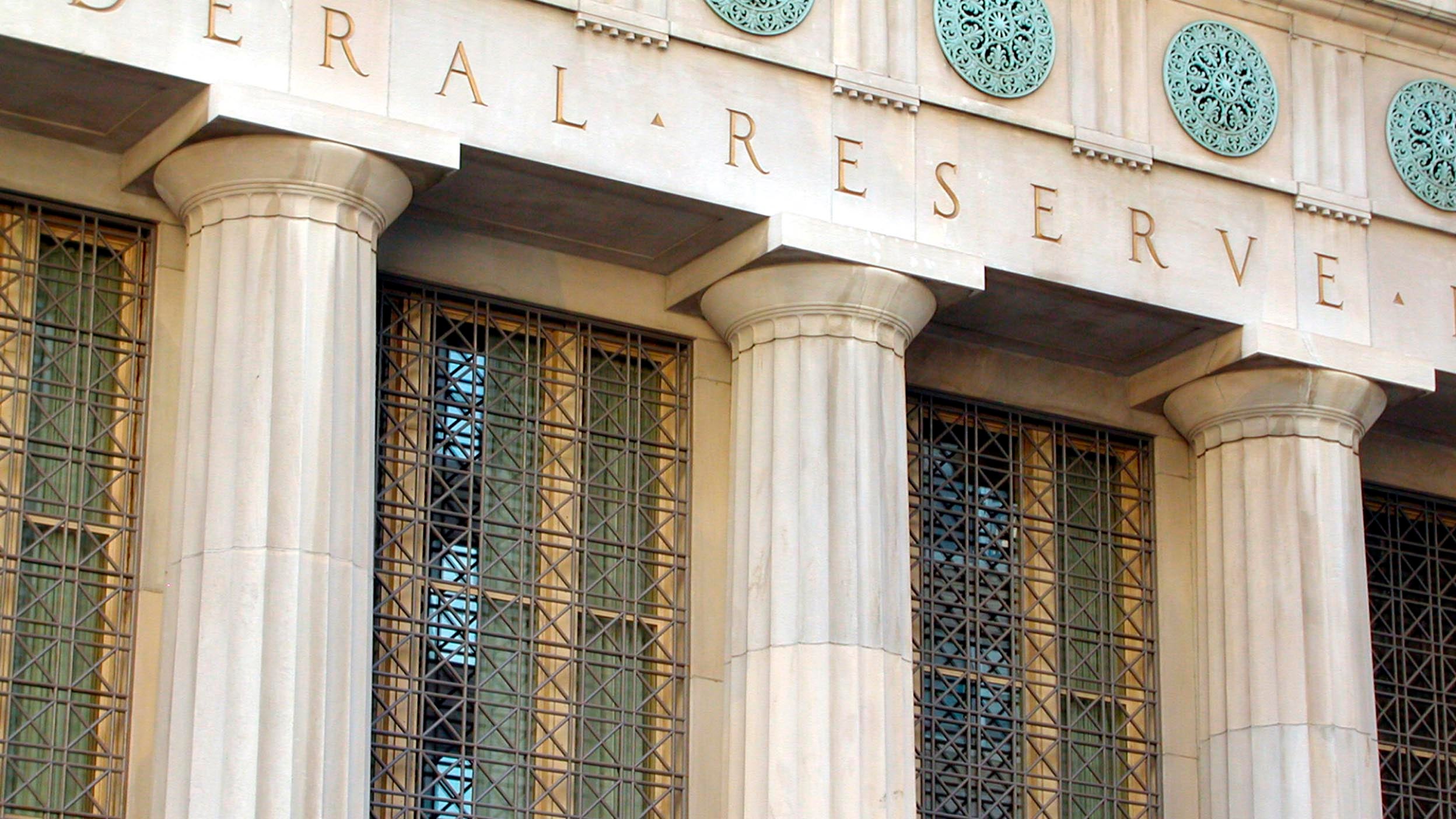
Markets and Economy 2025 investment outlook: After the landing
We expect significant monetary policy easing to push global growth higher in 2025, fostering an attractive environment for risk assets as central banks achieve a “soft landing.”

I believe there will be no more rate hikes from the Federal Reserve, European Central Bank, or Bank of England.
The data has shown continued progress on disinflation with economic growth slowing but still resilient — particularly in the US.
I also expect hawkish warnings that central bankers stand ready to hike again if they don’t see further progress on disinflation.
This week will see a trifecta of central bank meetings: the US Federal Reserve (Fed), the European Central Bank (ECB), and the Bank of England (BOE). Behind the scenes, I suspect these central bankers are high-fiving each other, drinking punch, and eating cake because they have come to the conclusion they can have their cake and eat it too — that inflation can be tamed without sending their respective economies into a serious recession. (And they were right — inflation has been transitory, just not as transitory as many would have liked.) In front of the microphones, however, I expect central banks to maintain a more hawkish public face regarding interest rate hikes.
We saw this dynamic play out last week with the Bank of Canada (BOC), which has been at the vanguard of Western developed banks in the last several years. The BOC met last week and decided to keep rates on hold (they haven’t hiked since July). In a nod to the progress it’s recently seen on inflation, the BOC removed this language from its statement: “…progress towards price stability is slow and inflationary risks have increased” However, it maintained a hawkish tone publicly, warning that “Governing Council is still concerned about risks to the outlook for inflation and remains prepared to raise the policy rate further if needed.” They also added that they wanted to see “a further and sustained easing in core inflation.”1
That will be the playbook I believe the Fed, ECB, and BOE are likely to follow this week: no change in policy but an abundance of hawkish warnings that they stand ready to hike again if they don’t see further progress on disinflation. They are trying their best with their words to keep a lid on the easing of financial conditions.
The bottom line: I believe there will be no more rate hikes, and they will instead be thinking about when to start cutting.
What makes me so confident? The data. It has shown continued progress on disinflation with economic growth slowing but still resilient — particularly in the US. Even the data we got last week shouldn’t stop the Fed from starting rate cuts in the spring of 2024:
We’re seeing a similar story in the eurozone and UK, where disinflationary progress has been significant. So much so that monetary hawk and ECB Executive Board member Isabel Schnabel said last week, “When the facts change, I change my mind…The most recent inflation number has made a further rate increase rather unlikely…The recent inflation print has given me more confidence that we will be able to come back to 2% no later than 2025."4
And the UK and eurozone economies are holding up despite the aggressive tightening cycle they have experienced. The S&P Global / Hamburg Commercial Bank eurozone composite PMI for November, released last week, hit a four-month high, although still well within contraction territory.5 I was particularly encouraged by the readings from Germany, as its economy has been under significant pressure. Germany Services PMI for November positively surprised, rising significantly higher than its October reading — and near expansion territory, clocking in at 49.6. 5 There was also a positive surprise in the UK; UK services PMI was an impressive 50.9, up from October’s 49.5.5
Now having said all that, I do think these economies will experience a significant slowdown in the first half of 2024, as the aggressive rate hikes of recent past catch up with them. For example, we have seen a significant increase in US bankruptcies: commerical chapter 11 filings increased 141% in November 2023 from November 2022,6 which I think has a lot to do with tighter credit conditions.However, I think it will be a bumpy landing, not a hard landing, and I expect to see a re-acceleration in the second half of the year. (Learn more in our 2024 annual investment outlook.)
But the key takeaway is that I believe Western developed central banks are done hiking and are now concerned with when to cut, but I am also prepared for some hawkish public warnings — even if they are privately celebrating (and having their cake and eating it too).
The data reports aren’t slowing down. See below for a list of what I’m watching. And on Dec. 13, join me on X, formerly known as Twitter, as I share my real time views of the Federal Open Market Committee interest rate decision and key takeaways from Fed Chair Jay Powell’s press conference as it happens.
Date |
Event |
What it tells us |
|---|---|---|
Dec. 12 |
US Consumer Price Index |
Tracks the path of inflation. |
Dec. 13 |
UK GDP |
Measures a region’s economic activity. |
Dec. 12/13 |
Eurozone Industrial Production |
Indicates the economic health of the industrial sector. |
Dec. 13 |
Federal Open Market Committee meeting |
Reveals the latest decision on the path of interest rates. |
Dec. 14 |
European Central Bank meeting
|
Reveals the latest decision on the path of interest rates. |
Dec. 14 |
Bank of England meeting |
Reveals the latest decision on the path of interest rates. |
| Dec. 14 | Swiss National Bank meeting | Reveals the latest decision on the path of interest rates. |
Dec. 14 |
US Retail Sales |
Measures consumer demand. |
Dec. 15 |
China Retail Sales |
Measures consumer demand. |
Dec. 15 |
US Industrial Production |
Indicates the economic health of the industrial sector. |
Dec. 15 |
US S&P Global Flash PMIs |
Indicates the economic health of the manufacturing and services sectors. |
Source: Bank of Canada press release, Dec. 6, 2023
Source: US Employment Situation Report, Dec. 8, 2023
Source: University of Michigan Survey of Consumers, Dec. 8, 2023
Source: Exclusive: ECB hawk Schnabel takes rate hike off table, Reuters, Dec. 8, 2023
Source: S&P Global/HCOB, as of Dec. 8, 2023
Source: Bankruptcy Statistics, American Bankruptcy Institute, Nov. 2023

We expect significant monetary policy easing to push global growth higher in 2025, fostering an attractive environment for risk assets as central banks achieve a “soft landing.”

Despite an eventful week in politics, monetary policy from central banks still matters more to markets and economies over the long term.

The Federal Reserve unanimously decided to cut rates by a quarter point, and in my opinion, there’s far more to go for the Fed in this easing cycle.
NA3277148
Header image: fhm / Getty
Investors should consult a financial professional before making any investment decisions. This does not constitute a recommendation of any investment strategy or product for a particular investor. Investors should consult a financial professional before making any investment decisions.
All investing involves risk, including the risk of loss.
Past performance does not guarantee future results.
Investments cannot be made directly in an index.
This does not constitute a recommendation of any investment strategy or product for a particular investor. Investors should consult a financial professional before making any investment decisions.
Should this contain any forward looking statements, understand they are not guarantees of future results. They involve risks, uncertainties, and assumptions. There can be no assurance that actual results will not differ materially from expectations.
Disinflation, a slowing in the rate of price inflation, describes instances when the inflation rate has reduced marginally over the short term.
Inflation is the rate at which the general price level for goods and services is increasing.
Core inflation is the change in the costs of goods and services, but it does not include those from the food and energy sectors.
The Federal Open Market Committee (FOMC) is a 12-member committee of the Federal Reserve Board that meets regularly to set monetary policy, including the interest rates that are charged to banks.
Hawkish is to favor relatively higher interest rates if they are needed to keep inflation in check.
The policy rate is the rate that is used by central bank to implement or signal its monetary policy stance.
The European Central Bank (ECB) is responsible for the monetary policy of the European Union.
The eurozone (also known as the euro area or euroland) is an economic and monetary union of European Union member states that have adopted the euro as their common currency.
Purchasing Managers’ Indexes (PMI) are based on monthly surveys of companies worldwide, and gauge business conditions within the manufacturing and services sectors.
The Survey of Consumers is a monthly telephone survey conducted by the University of Michigan that provides indexes of consumer sentiment and inflation expectations.
Tightening monetary policy includes actions by a central bank to curb inflation.
The opinions referenced above are those of the author as of Dec. 11, 2023. These comments should not be construed as recommendations, but as an illustration of broader themes. Forward-looking statements are not guarantees of future results. They involve risks, uncertainties and assumptions; there can be no assurance that actual results will not differ materially from expectations.
This link takes you to a site not affiliated with Invesco. The site is for informational purposes only. Invesco does not guarantee nor take any responsibility for any of the content.